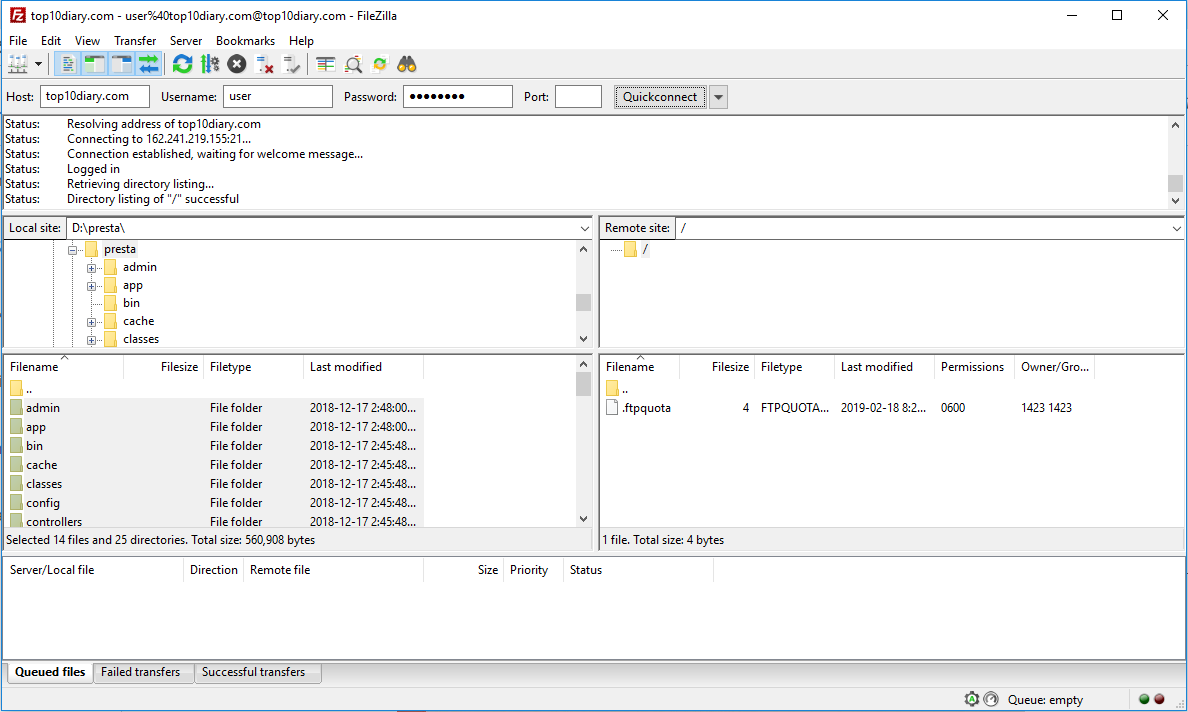By Martin Tumusiime, Alibaba Cloud Tech Share Author. Tech Share is Alibaba Cloud's incentive program to encourage the sharing of technical knowledge and best practices within the cloud community.
When setting up an e-commerce platform, there are a number of factors one should consider, including the type of software, the hosting provider, payment methods, and others. Usually, developers prefer working with open source platforms like PrestaShop, Magento, OpenCart, and WooCommerce to quickly get started developing an e-commerce platform.
Personally, I have always preferred using PrestaShop for my client's e-commerce websites. I find the software and interface user-friendly and the process of deploying the software to be relatively easy.
This guide shows you how you can easily deploy PrestaShop e-commerce software on your Alibaba Cloud Elastic Compute Service (ECS) instance.
These steps are tested, as such, we expect them to work perfectly once followed carefully.
PrestaShop is a free and open source software used to develop nice looking e-commerce stores. The software has a large support by a community of developers who build outstanding plugins and beautiful themes for stores. PrestaShop is currently used by 250,000 shops and is available in 60 different languages.
Installing PrestaShop on your server instance is very easy. Once you have your web server already set up, the other part of the configuration may take you less than 15 minutes to complete.
So before we can get hands-on installing PrestaShop, make sure that your server meets the recommended requirements above. You may skip the first section of this tutorial if you think your web server is properly set up, however, if you're a beginner I recommend going through this section to avoid trouble deploying PrestaShop on your server instance.
There are two ways you can set up your web server instance on Alibaba cloud; one involves using the control panel (read the article here on setting up cPanel on Alibaba cloud ECS) and the other involves setting up a server from scratch. Both methods work well, it all comes down to personal preference. In this tutorial, we shall go through all the two methods indicated above.
After installing and deploying your cPanel on your Alibaba Cloud server, perform the following steps to set up your PrestaShop store:
I would recommend the option below while trying to push your files on the web server since it is more accurate.
You can also use your FTP client such as FileZilla to transfer files to your server host. Use the required details to connect to your server. In the case, we need uncompress our prestashop.zip file. Read this article on how to use FileZilla to upload and manage website files.
After the connection is successful in Filezilla or any other FTP client, navigate to your local files until you get the unzipped PrestaShop files. Keep the files open in the left section of your fileZilla client FTP.
We shall then drag and drop files from the Left section to our remote site. The other option is to select all files, right-click, and select Upload. You'll have to wait for a few minutes (usually between 15-30 minutes) before the upload is complete.

If you want your PrestaShop store to appear as https://www.my-store.com, place the PrestaShop files in the public_html folder otherwise create a subfolder for your website subdomain.
Now, your left section of Filezilla will contain local files of the unzipped PrestaShop software and the right contains the destination location.
Uploading files to your host are simple, simply drag and drop files from local folder to the remote folder or simply right click and select upload in the context menu.
Once the files have been successfully uploaded on our server instance, create a database server with MySQL Database wizard in the cPanel dashboard. In case you don't have a MySQL user who has privileges to access and modify this database, create it as well.
Before you can install PrestaShop in GUI, you need to first consider setting up a MySQL database. For cPanel user, we shall use PhpMyAdmin or more easily MySQL Database wizard which comes already preinstalled.
After adding files like this in your server, you should consider jumping to the following section (step 2) to install and configure your PrestaShop store on your Alibaba server instance. The following section is for those who want to configure their server from scratch. Remember cPanel isn't free, so the method below maybe cost effective.
Read this article on how to set up your instance on Alibaba Cloud.
After configuring and setting up your Ubuntu server. Next, we need to download and install PrestaShop software in our '/var/www/html' directory. Use the commands below.
$ cd /var/www/html
$ sudo wget https://download.prestashop.com/download/releases/prestashop_1.7.2.1.zipUnzip the PrestaShop file using the following command below.
$ sudo apt-get install unzip
$ sudo unzip prestashop_1.7.2.1.zipYou should remember to delete the default index.html file which was created by Apache during installation of the LAMP stack on the server. To do this, use the command below.
$ sudo rm /var/www/html/index.htmlTo enable PrestaShop to access and modify the right files, use the following commands below.
$ sudo chown www-data: /var/www/html/
$ sudo chmod -R 755 /var/www/html/After feeding the above commands successfully into your Ubuntu 18.04 server, you can now move to the next step which is much more fun.
Perhaps now the simplest step, after going through all the above hustle setting up & deploying your PrestaShop store, this step will take you through the graphical life of setting up your shop on the Alibaba ECS server instance.
This process may take you a few minutes to get done.
To successfully deploy your PrestaShop store, Navigate to a browser and enter your server web address. Prestashop will automatically detect that it's not yet installed and will take you to the auto installer.
http://ip_address/
Next, you need to read as you click Continue or Next. Let's see how this is done below.
Database Server Address: The hostname of your MySQL server. Usually, mine is localhost, I think this may be the same with yours.
Database name: The name of the database we created in our previous steps before.
Database Login: The name of the MySQL user we created for our database
Database Password: The password for our MySQL user.
Tables_Prefix: The default prefix for your store is ps_. This will allow PrestaShop to create tables such as ps_cart, ps_customer among others.
Drop Existing Tables: Keep this section checked.
Now Click the "Test your database connection now!" to verify the information you gave is correct.
Click "Next": the install will start configuring your shop, creating and populating the database tables, etc. This might take a few minutes: please be patient and do not touch your browser!
Once the installation and configuration are done, you can now log in to your PrestaShop store backend and customize it.
Congratulations! You have now successfully deployed a store on your Alibaba Cloud Elastic Compute Service (ECS) instance.

2,598 posts | 769 followers
FollowAlibaba Clouder - July 18, 2019
Alibaba Clouder - August 22, 2018
Alibaba Clouder - August 22, 2018
Alibaba Clouder - July 18, 2019
Alibaba Cloud Community - December 12, 2024
Alibaba Cloud Community - December 16, 2024

2,598 posts | 769 followers
Follow Web Hosting Solution
Web Hosting Solution
Explore Web Hosting solutions that can power your personal website or empower your online business.
Learn More Web Hosting
Web Hosting
Explore how our Web Hosting solutions help small and medium sized companies power their websites and online businesses.
Learn More Web App Service
Web App Service
Web App Service allows you to deploy, scale, adjust, and monitor applications in an easy, efficient, secure, and flexible manner.
Learn More ICP Support Solution
ICP Support Solution
Learn how to obtain an ICP Filing or ICP Commercial License to host your website in Mainland China.
Learn MoreMore Posts by Alibaba Clouder